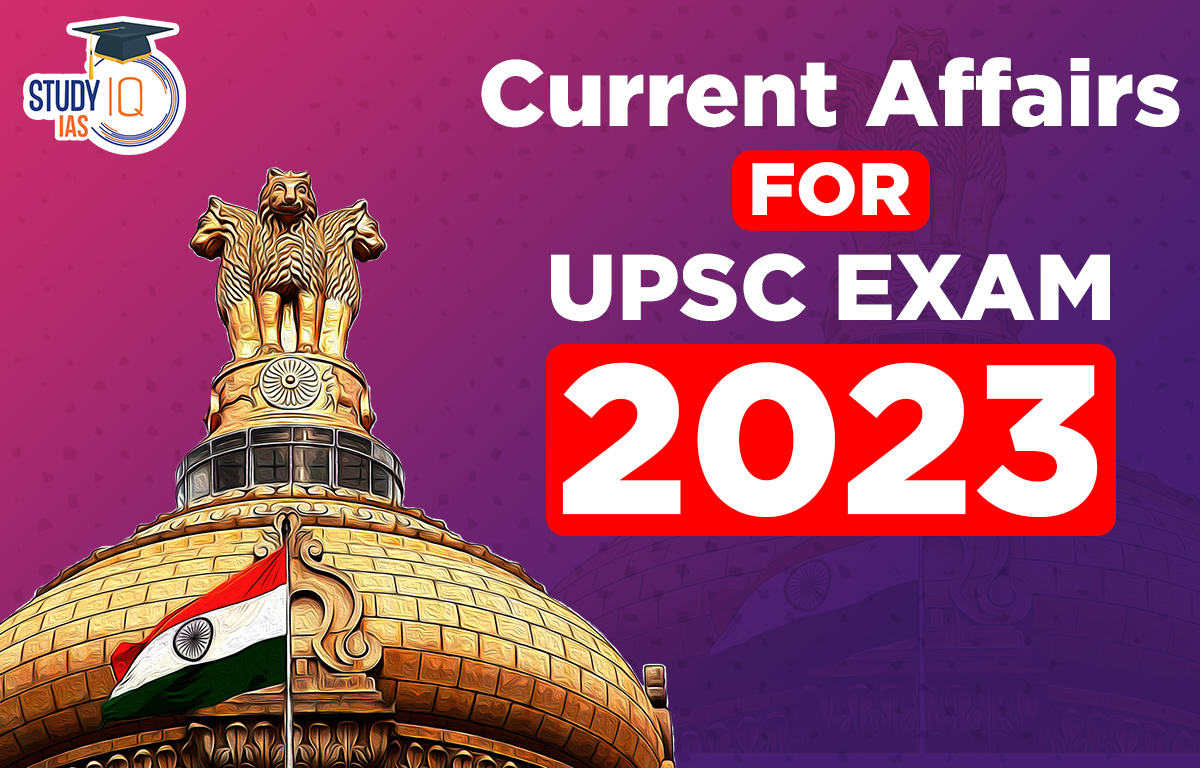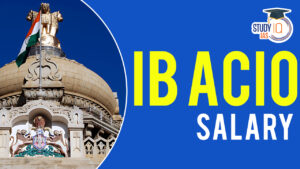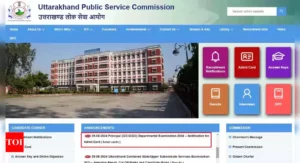Table of Contents
Current Affairs 23rd March 2023 for UPSC Prelims Exam
SEED Scheme
Context: The Minister of State for Social Justice and Empowerment has given a written reply in Rajya Sabha about Scheme for Economic Empowerment of DNT Communities (SEED).
About SEED Scheme
- The Scheme for Economic Empowerment of Denotified/Nomadic/Semi-Nomadic (SEED) communities was launched in 2022 by the Ministry of Social Justice & Empowerment.
- Major Components under SEED
- Educational empowerment: Free coaching to students from these communities for Civil Services, entry to professional courses like medicine, engineering, MBA, etc.
- Health Insurance through PMJAY of National Health Authority.
- Livelihoods to support income generation.
- Housing (through PMAY/IAY).
- Implementation: The Development and Welfare Board for DNTs, SNTs &NTs up in 2019, has been tasked with the implementation of the scheme.
- Features:
- Budget: Scheme was launched with outlay of 200 crore until 2027.
- Registration: Online Portal to ensure seamless registration and to act as a repository of the data on these communities.
- Eligibility: Eligible families include those having income from all sources of Rs.2.50 lakh or less per annum and not availing any such benefits from similar Scheme of Centre Government or the State Government.
About De-Notified, Nomadic and Semi-Nomadic Tribes
- DNTs are communities that were ‘notified’ as being ‘born criminals’ during the British regime under a series of laws starting with the Criminal Tribes Act of 1871.
- Such related acts were repealed by the Independent Indian Government in 1952, and these communities were “De-Notified”.
- There are nearly 1,500 nomadic and semi-nomadic tribes and 198 de-notified tribes, comprising 15 crore Indians, according to the Renke Commission, 2008.
Current Affairs 22nd March 2023 for UPSC Prelims Exam
Chandrayaan 3
Context: According to Indian Space Research Organization (ISRO), Chandrayaan 3 is likely to be launched in the middle of 2023.
About Chandrayaan-3 Mission
- It will demonstrate end-to-end capability in safe landing and roving on the lunar surface and consists of a lander-rover configuration.
- It is a follow-up to the Chandrayan-2 mission
- It will be performing in-situ scientific observations.
- Aim: Better understanding of the Moon’s composition.

- Components: It consists of an indigenous Lander module (LM), Propulsion module (PM), and a Rover.
- Lander: It will have the capability to soft land at a specified lunar site and deploy the Rover which will carry out in-situ chemical analysis of the lunar surface during the course of its mobility.
- Payloads to carry out experiments on the lunar surface:
- Chandra Surface Thermophysical Experiment (ChaSTE) will measure the thermal conductivity and temperature,
- Lunar Seismic Activity (ILSA) will measure the seismicity around the landing site.
- Langmuir Probe (LP) will estimate the plasma density and its variation.
- Passive Laser Retroreflector Array from NASA is accommodated on the mission for lunar laser ranging studies.
- Spectro-polarimetry of Habitable Planet Earth (SHAPE) payload to study the spectral and Polari metric measurements of Earth from the lunar orbit.
Additional Information:
About Adiya-L1
- Aditya-L1 is India’s first space-based mission to study the Sun.
- It will be placed in a halo orbit around the first Lagrange (L1) point of the Sun-Earth system.
- A satellite placed in the halo orbit around the L1 point has the major advantage of continuously viewing the Sun without any occultation/eclipses.
- This will provide a greater advantage of observing the solar activities and its effect on space weather in real time.
- Aditya-L1 payloads are expected to provide the most crucial information to understand the problem of coronal heating, coronal mass ejection, pre-flare and flare activities and their characteristics, dynamics of space weather, propagation of particles and fields etc.
Shukrayaan (India’s Venus mission)
- It is expected to study Venus’s geological and volcanic activity, emissions on the ground, wind speed, cloud cover, and other planetary characteristics from an elliptical orbit.
- It will be an orbiter mission.
Atmospheric Rivers
Context: California has experienced an exceptionally wet winter with 11 atmospheric rivers affecting the state since late December.
What are Atmospheric Rivers?
- They are relatively long, narrow regions in the atmosphere – like rivers in the sky – that transport most of the water vapour outside of the tropics. Ex: Pineapple Express.
- These columns of vapour move with the weather, carrying an amount of water vapour roughly equivalent to the average flow of water at the mouth of the Mississippi River.
- When the atmospheric rivers make landfall, they often release this water vapour in the form of rain or snow.
Features of Atmospheric Rivers
- Atmospheric rivers are a key feature in the global water cycle and are closely tied to both water supply and flood risks — particularly in the western United States.
- They can create extreme rainfall and floods, often by stalling over watersheds vulnerable to flooding.
- These events can disrupt travel, induce mudslides and cause catastrophic damage to life and property.
- They can contribute to beneficial increases in snowpack.

Global Initiative on Digital Health
Context: Government of India, under its G20 Presidency, has proposed a convergent approach for all ongoing digital health initiatives through Global Initiative on Digital Health.
About Global Initiative on Digital Health
- Aim: To converge the global efforts for digital health and scale up digital solutions with use of cutting-edge technologies.
- Digital Interventions enabled healthcare services to a wide range of services with ease, reaching the innermost regions of the nation
- Guiding authority: It will be done under overall guiding framework of World Health Organisation.
- Participants: It will be a collaboration of all countries for enhanced coverage and quality of healthcare services.
- Activities: It will make available curated IT tools as Digital Public Health Goods, including their customization and implementation across the world particularly the Low and Middle-Income countries.
India Effort for Universalization of Digital Health:
- India provided Co-Win, E-sanjeevani, and Aarogya Setu applications as digital public goods.

Global Happiness Index
Context: Recently, Finland has topped as the world’s happiest country for the sixth consecutive year.
About Happiness Index:
- The World Happiness Report is an annual report published by the United Nations Sustainable Development Solutions Network.
- The report is based predominantly on data from the main life evaluation question in the Gallup World Poll.
- Published since 2012, the World Happiness Report is based on two key ideas:
- Happiness or life evaluation measured through opinion surveys and
- Identifying key elements that determine well-being and life evaluation across countries.
- The UN Sustainable Development Solutions Network, uses six key factors to help rank the more than 150 countries (137 in 2023) based on their average life evaluations between 2020-2022:
- Social support
- Income
- Health
- Freedom
- Generosity
- Absence of corruption
- Every year, each variable measures a populated-weighted average score on a scale of 0-10 that is tracked over a period of time and further compared with other countries.
- Top ranking countries include: Finland, Denmark, Iceland etc.
- India’s position in the World Happiness Report:
- India’s position in the World Happiness Report has improved from 136 to 126, although it is still behind its neighboring countries such as Pakistan (108), Sri Lanka (112), Myanmar (117), and Bangladesh (118).
- Most unhappy countries of the world:
- The World Happiness Report has ranked Afghanistan as the least happy country out of the 137 nations surveyed.
- other nations such as Lebanon, Zimbabwe, and the Democratic Republic of Congo as being among the unhappiest countries, largely due to factors such as high levels of corruption and low life expectancy.
Bhutanese Gross National Happiness Index was formed in 1972 that gave an idea to the World Happiness Index. Factors such as wealth, economic growth and comfort were not the ones that the government of Bhutan prioritized.
Lemru Elephant Reserve
Context: The CPR has been served IT notice for involving in ineligible activities, especially the Hasdeo movement. The Lemru Elephant Reserve is located near Hasdeo Forests.
About Lemru Elephant Reserve:
- The reserve is located in the Korba district of Chhattisgarh.
- Lemru reserve is planned to prevent human-animal conflict in the region, with elephants moving into Chhattisgarh from Odisha and Jharkhand.
- The reserve is aiming to providing a permanent habitat to the elephants.
- Earlier, the state government notified the reserve (Conservation Reserve) in October 2020 under Section 36A of the Wildlife (Protection) Act, 1972 (WLPA).
- Section 36A has a special provision that gives the Union government a say in the process of notification in case the land to be notified as conservation reserve has areas belonging to the Centre.
- Elephant reserves are not recognized under the WLPA. However, an area can be declared a ‘conservation reserve’ under the Section.
Other Protected Areas in Chhattisgarh:
- Achanakmar Tiger Reserve.
- Indravati Tiger Reserve.
- Sitanadi-Udanti Tiger Reserve
- Kanger Valley National Park
- Badalkhol Tamor Pingla Elephant Reserve.

Padma Awards
Context: Over 54 people were awarded the Padma Awards recently.
About Padma Awards
- Padma Awards are one of the highest civilian honors of India announced annually on the eve of Republic Day after the Bharat Ratna.
- Background:
- The Government of India instituted two civilian awards-Bharat Ratna & Padma Vibhushan in 1954.
- The Padma Vibhushan had three classes namely Pahela Varg, Dusra Varg and Tisra Varg. These were subsequently renamed as Padma Vibhushan, Padma Bhushan and Padma Shri in 1955.
- Objective:
- To recognize achievements in all fields of activities or disciplines where an element of public service is involved.
- The total number of awards to be given in a year (excluding posthumous awards and to NRI/foreigners/OCIs) should not be more than 120.
- The award does not amount to a title and cannot be used as a suffix or prefix to the awardees’ name.
- Categories: The Awards are given in three categories:
- Padma Vibhushan is awarded for ‘exceptional and distinguished service;
- Padma Bhushan is awarded for ‘distinguished service of a high order’; and
- Padma Shri is awarded for ‘distinguished service’.
- Nominations for the Awards:
- All nominations are placed before the Padma Awards Committee, which is constituted by the Prime Minister every year.
- The Committee is headed by the Cabinet Secretary and includes Home Secretary, Secretary to the President and four to six eminent persons as members.
- The recommendations of the committee are submitted to the Prime Minister and the President of India for approval.
- Eligibility:
- All persons without distinction of race, occupation, position or sex are eligible for these awards. However, Government servants including those working with PSUs, except doctors and scientists, are not eligible for these Awards.
- The award is normally not conferred posthumously. However, in highly deserving cases, the Government could consider giving an award posthumously.
- A higher category of Padma award can be conferred on a person only where a period of at least five years has elapsed since conferment of the earlier Padma award. However, in highly deserving cases, a relaxation can be made by the Awards Committee.

Marital Rape
Context: The Supreme Court will be hearing petitions seeking to criminalize marital rape.
Background
- The High Court of Karnataka had held that a husband was liable to be charged for rape under the Indian Penal Code (IPC) for forcible sexual intercourse with his wife.
- Stand of the government: The centre has said that it was reviewing the law and the topic needed wider deliberations before coming to a conclusion.
What is Marital Rape?
- Marital Rape is defined as the act of sexual intercourse with one’s spouse without the spouse’s consent. It is usually considered as a form of domestic violence and sexual abuse.
- Marital Rape in India:
- Exception 2 under Section 375 of IPC decriminalizes marital rape. It says that “sexual intercourse or sexual acts by a man with his own wife, the wife not being under eighteen years of age, is not rape.”
- Reasons for exemptions:
- Prevent misuse of law: The exemption will prevent wives from misusing the law against their husbands by filing fake rape cases and there will not be any way of determining the truth.
- Protection of institution of marriage: The institution of marriage will be protected through exemption granted under the law.
- Situation across the world:
- Over 150 countries have criminalized ‘marital rape’. India is among 34 countries that have not yet criminalized marital rape.
- First country to criminalize marital rape was Soviet Union in 1922.
- Concerns with Marital Rape:
- Basic rights of women: Marital Rape exceptions violate Right to equality (Article 14), Right against discrimination (Article 15), and Right to live a life with dignity (Article 21).
- Objectification: The exemptions have evolved from the wrong notion that woman is a property of a man, who has the right to exercise his will.
- Related Judgments: In Independent thought Vs Union of India, 2017 case, the Supreme Court read down Exception 2 to Section 375 IPC and replaced words “15 years” with “18 years” for the purposes of exception under section 375 IPC.
- Related committee: Justice Verma Committee recommended criminalization of ‘marital rape’. This was however not implemented.
Related Information
Conjugal Rights
- Conjugal rights are rights created by marriage, i.e., right of the wife or husband to the society/company of the other spouse.
- These also include certain matrimonial rights that need to be performed by both the spouses.
- Components under conjugal rights:
- Living together: The married couple should live together
- Marital physical relations: The married couple has rights and duties together with each other in terms of physical or sexual relationships.
- Comforting each other: The spouses need to comfort each other like emotional and mental comfort.
- Matrimonial Obligation: The married couple is required to share the responsibility of the households as well.
- Conjugal rights in India:
- Conjugal rights in India have been recognized both under personal laws (marriage, divorce etc) and in criminal laws (payment of maintenance and alimony to a spouse).
- Restitution of Conjugal rights:
- It refers to restoring the right to stay together. Acts such as Hindu marriage act and Special marriage act have provisions related to restitution of conjugal rights.
- Conjugal rights empower a husband or a wife to move the local district court, complaining that the other partner has “withdrawn” from the marriage without a “reasonable cause”.


 MPSC Syllabus 2025, Exam Pattern, Downlo...
MPSC Syllabus 2025, Exam Pattern, Downlo...
 IB ACIO Salary 2025, In-Hand Salary, All...
IB ACIO Salary 2025, In-Hand Salary, All...
 UKPSC Lower PCS Recruitment 2024: Exam D...
UKPSC Lower PCS Recruitment 2024: Exam D...





















